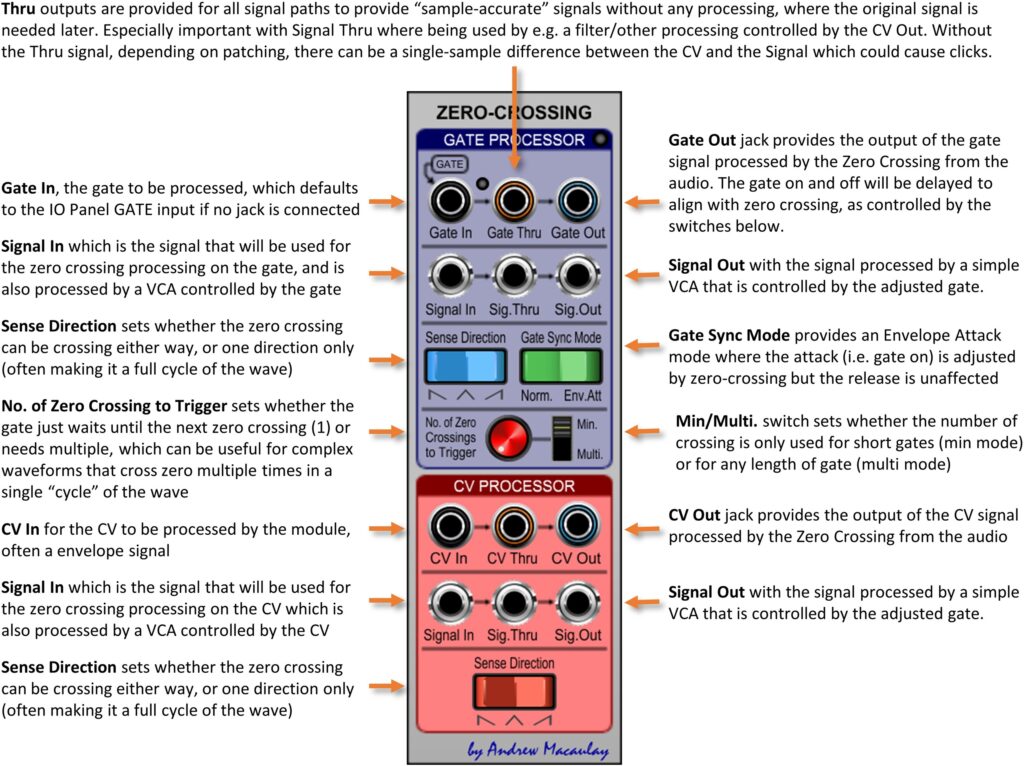The Zero-Crossing Processor module is a utility module that provides “zero-crossing” processing for Gate and CV signals, taking inspiration from Expert Sleepers Persephone. This process is designed to remove or reduce clicks generated when gates/CVs allow the signal through when the signal is not at zero, and especially when the signal is +5V or -5V.
The module has two independent sections, one for processing Gate signals and the second for processing CV signals. As the zero-crossing process is aligned at sample level, each input has a thru output as well as a processed output so that the source can be used in modules further down the signal chain knowing that they are fully aligned at the internal sample rate. Each section has a signal path which is needed to provide the zero-crossing information, but which also offers a VCA out with the processed Gate or CV.
The Gate Processing section adjusts the start and end time of the gate signal so that they are always at the time that the input signal crosses zero. This can be controlled so that it senses zero-crossing in any direction, or just crossing up or down. This section also allows the minimum (or gate on time) to be aligned to multiple crossings to work better with complex waveforms. Note that the Gate Processing section may not remove all clicks (but will reduce them) at higher audio frequencies due to the limitations of the internal sample rate.
The CV Processing section uses a sample and hold model on the CV, so that the CV is stepped whenever the signal crosses zero, so that e.g. aggressive envelopes can be tamed so that they don’t cause clicks. This can be controlled so that it senses zero-crossing in any direction, or just crossing up or down. This section also allows the minimum (or gate on time) to be aligned to multiple crossings to work better with complex waveforms.

Zero-Crossing Explained
Zero-Crossing processing can be used to reduce/remove clicks from audio signals when using aggressive envelope changes (such as simple gates or fast attack or decay times). The zero-crossing processing has two approaches depending on its use: zero-crossing for gates and zero-crossing for Control Voltages.
With the Zero Crossing Gate Processing (in the Zero Crossing Processor modules) the gate edges are shifted to align with the signal crossing zero; with Zero Crossing CV Processing (in the Zero Crossing Processor and some VCAs) the envelope is adjusted by a sample and hold approach based on the signal crossing zero. The diagrams below illustrate these two approaches.

Using these techniques, the Zero-Crossing Gate Processing can be used in the Zero-Crossing Processors to extract part, complete or multiple cycles of a waveform as well as helping with reducing audio clicks.